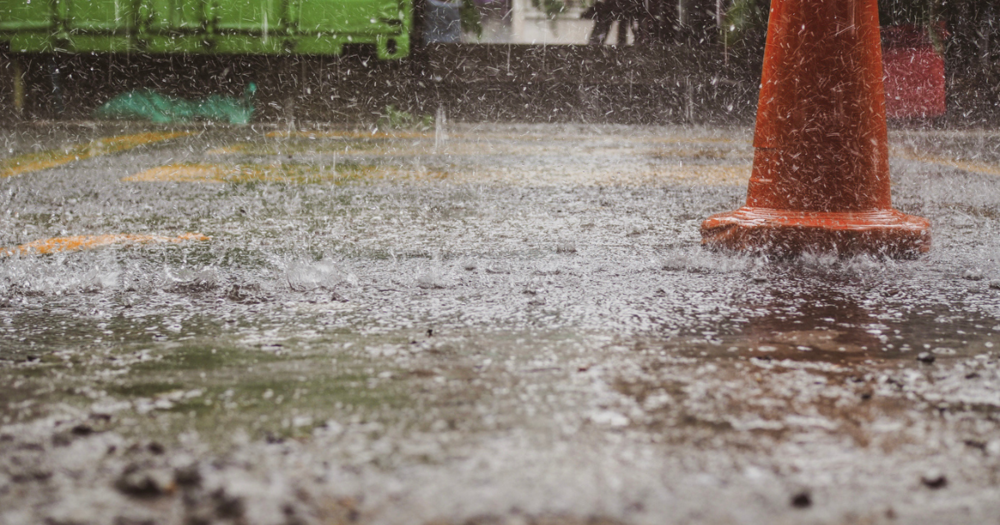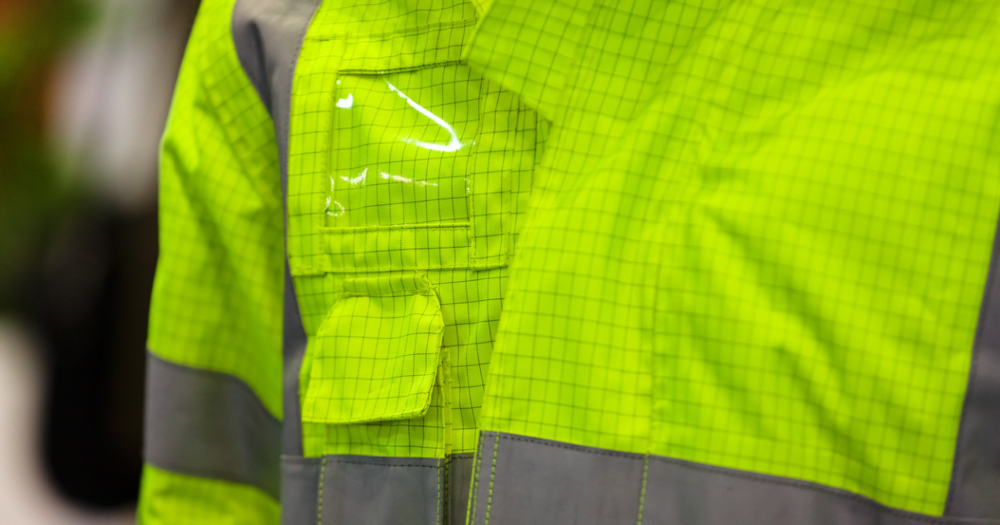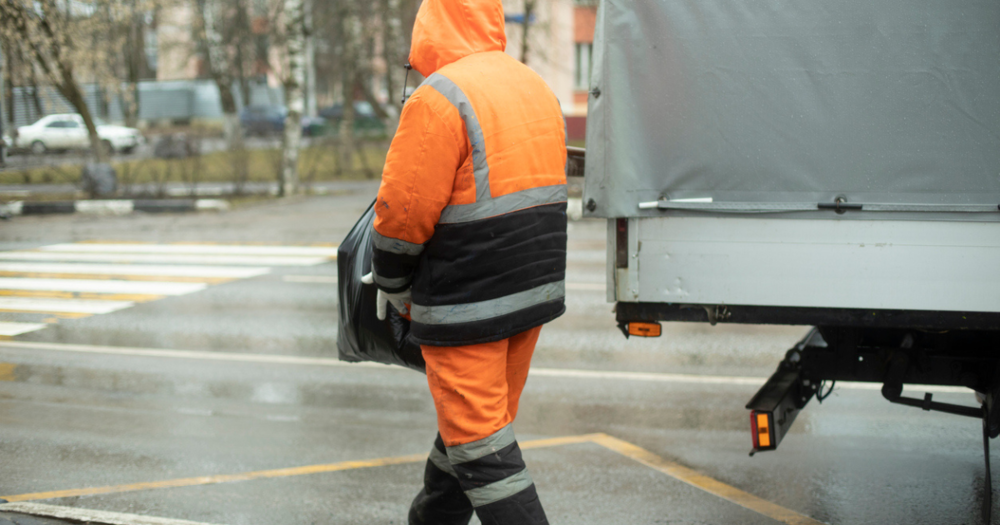 Rain or shine, work must go on. For land surveyors, industrial workers, and many other professionals, adverse weather isn't just a minor inconvenience—it's a challenge that demands the right protective rain gear.
Rain or shine, work must go on. For land surveyors, industrial workers, and many other professionals, adverse weather isn't just a minor inconvenience—it's a challenge that demands the right protective rain gear.
Whether it's mapping out new territories, working on a construction site, or ensuring the safety of a workplace, being adequately protected from the elements is a must. This protection not only prevents delays and enhances productivity but, most critically, safeguards workers from potential hazards.
Understand Your Needs
When considering rain gear, it's not just about donning any waterproof attire and heading out to work. The ideal rain gear is determined by specific job requirements, the nature of the tasks, and the environment in which one operates. Here are some factors to consider:
Nature of the Job
A land surveyor trekking across uneven terrains has different requirements than an industrial worker overseeing machinery. While both need protection from the rain, the former might prioritize mobility and lightweight gear, whereas the latter might look for more robust protection from other elements like mud or industrial fluids.
Duration of Exposure
How long are you expected to be out in the rain? For short durations, a lightweight rain poncho might suffice. However, for extended periods, you'd want full coverage gear with reinforced waterproofing to ensure no seepage occurs over time.
Intensity of Rain
Not all rainfalls are created equal. There's a vast difference between being out in a mild drizzle versus a torrential downpour. Understanding the expected rainfall intensity can guide your choice. Water-resistant gear might work for the occasional drizzle, but for consistent or heavy rain, waterproof gear is non-negotiable.
Additionally, consider other environmental factors. Will you be exposed to other elements like wind or cold? If so, gear that offers protection from the rain and insulation from the cold might be the way to go.
The Basics of Rain Gear

Selecting the right rain gear might seem straightforward, but diving a little deeper will reveal nuances that can significantly impact your comfort and protection. Understanding the basics is pivotal to ensure you're not just shielded from the rain but also remain functional and agile during your tasks.
Materials
- Gore-Tex: Celebrated for its breathability while still providing waterproof protection, Gore-Tex is a top-tier choice for those who need to stay dry without feeling clammy.
- PVC (Polyvinyl Chloride): Offering excellent water resistance, PVC is a common choice for rain gear. However, it might not be as breathable as other materials.
- Nylon with a Waterproof Coating: Light, durable, and water-resistant, nylon rain gear often comes with a special coating or lining that enhances its waterproofing attributes.
Design Elements
- Hood Design: A well-designed hood protects the head and face without restricting vision or movement.
- Venting Systems: Proper ventilation, often in the form of underarm zips or back vents, ensures you remain cool and reduces moisture build-up inside the gear.
- Pockets and Closures: Waterproof pockets can keep essential items dry, while quality closures (zippers, snaps, etc.) ensure no water sneaks in through the gaps.
- Adjustable Elements: Features like adjustable cuffs, waistbands, and hems can help customize the fit, keeping water out and warmth in.
Maintenance
- Cleaning: It's crucial to clean rain gear according to the manufacturer's instructions to maintain its waterproof qualities.
- Drying: Ensure gear is thoroughly dried before storage to prevent mold or mildew. Hanging it up in a well-ventilated area typically works best.
- Storing: Store rain gear in a cool, dry place, away from direct sunlight or heat sources to maintain its protective features and prolong its lifespan.
High-Visibility Gear: Class II vs. Class III

In many industrial and outdoor settings, staying dry isn't the only concern. Visibility, especially in adverse conditions or low-light scenarios, can be a matter of safety. High visibility rain gear, often distinguished by its bright colors and reflective strips, is designed to ensure workers are easily seen. But it's not a one-size-fits-all solution. Depending on your environment and job role, you may need to choose between Class II and Class III high visibility gear. Here's a breakdown:
What Is High-Viz?
High-visibility clothing is made to stand out against any background, often utilizing neon colors like yellow, orange, or green. Reflective strips or patches further enhance visibility, reflecting light from headlights, torches, or other light sources.
Class II
- Features:Class II garments typically cover the upper body, such as vests or jackets. They possess reflective strips around the torso and over the shoulders with at least 775 inches of safety yellow or safety orange background material and 201 square inches of reflective striping.
- Typical Uses: Ideal for jobs where workers need better visibility than what a regular outfit would offer but aren't necessarily exposed to high-speed traffic or extreme danger. This includes school crossing guards, parking attendants, and some road construction workers–particularly those in areas with slower traffic.
- Benefits: They provide a moderate level of visibility without being overly bulky.
Class III
- Features:Class III outfits offer the highest level of visibility. They usually include full-body coverage—like a combination of a vest/jacket and pants. The reflective strips are more extensive, covering the arms, legs, torso, and shoulders.
- Typical Uses: Perfect for high-risk environments where workers are exposed to high-speed traffic or need to be visible from a significant distance. Examples include highway construction workers (especially near high-speed zones), emergency responders, or night-time railway workers.
- Benefits: Maximum visibility ensures the worker stands out in almost any condition, from foggy mornings to pitch-black nights.
Choosing Between Class II and Class III
- Work Environment: In high-traffic areas or places with reduced visibility, Class III is typically the safer bet.
- Duration of Exposure: If you're working in low visibility conditions for extended periods, the comprehensive coverage of Class III might be crucial.
- Level of Risk: Jobs with a higher risk factor, especially concerning fast-moving vehicles or machinery, require Class III gear.
- Regulatory/Company Standards: Always consider local regulations and company safety guidelines. Some job sites or employers might have explicit requirements about the type of high-visibility clothing their workers should wear.
Additional Safety Components
While the main attire plays a pivotal role in protecting against rain and ensuring visibility, it's the additional components that complete the protective ensemble. Let's delve into these supplementary gear options that not only amplify your safety but also enhance comfort during challenging conditions.
Boots
- Waterproofing: Beyond keeping feet dry, waterproof boots prevent potential health issues like foot fungus. They are essential for those wading through puddles, mud, or standing water.
- Slip-Resistance: Especially crucial in rainy conditions where surfaces can become slick, slip-resistant boots help prevent accidents and injuries. They usually have deep treads that offer excellent grip.
- Durability and Comfort: Choose boots that are sturdy yet offer enough comfort for long hours. Features like cushioned insoles and ankle support can make a significant difference.
Gloves
- Water Protection: Waterproof gloves ensure hands remain dry, maintaining grip and dexterity.
- Insulation: For colder climates or conditions, insulated gloves offer warmth without compromising flexibility.
- High Visibility:Reflective or bright-colored gloves can further increase visibility, especially for those directing traffic or handling machinery.
Eyewear
- Clear Vision: Rain can obscure vision, making tasks dangerous. Water-resistant eyewear or goggles with anti-fog properties ensure clarity.
- Protection: Safety glasses shield eyes from not just rain but also potential debris, especially in industrial settings or construction sites.
- Comfort: Look for eyewear with adjustable straps or non-slip nose bridges to ensure they stay in place during rigorous activities.
Hats and Helmet Covers
- Water Shedding: A brimmed waterproof hat can direct rain away from the face, ensuring clear vision and comfort.
- Helmet Integration: For those wearing safety helmets, waterproof covers can offer rain protection without compromising safety standards.
Tools and Equipment Covers
- Protection: Waterproof covers for tools and equipment, such as radios or measurement devices, ensure functionality and longevity.
- Ease of Access: Select covers that allow easy accessibility to tools while providing ample protection.
Staying Dry and Safe

Rain might be a force of nature, but with the right gear, it doesn't have to dampen your productivity or compromise your safety. From understanding the nuances between Class II and Class III high visibility attire to acknowledging the importance of supplementary safety components, being well-informed is the first step in making the right choices.
Discover how to select the best rain gear for various professions and jobs. Learn about materials, design elements, and high-visibility options to ensure safety and comfort in wet conditions.
 Rain or shine, work must go on. For land surveyors, industrial workers, and many other professionals, adverse weather isn't just a minor inconvenience—it's a challenge that demands the right protective rain gear.
Rain or shine, work must go on. For land surveyors, industrial workers, and many other professionals, adverse weather isn't just a minor inconvenience—it's a challenge that demands the right protective rain gear.

